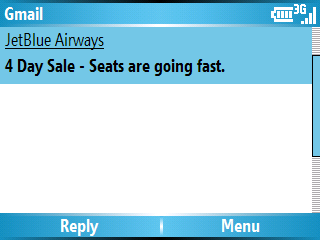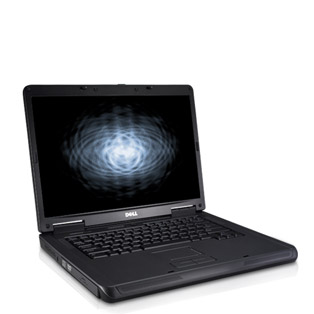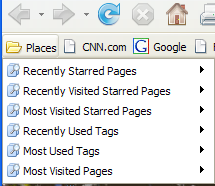Let’s start with a confession. I’ve bought into the Google ecosystem big-time. I use Gmail as my primary personal e-mail account. I use Google Apps for the email on the ochsenhirt.org domain. I use Google Reader for RSS and Google Maps for directions. I haven’t yet jumped on board the web apps bandwagon for word processing and spreadsheets, so the added features in Zoho haven’t been enough – on the few occasions I’ve done a spreadsheet or quick document online, it’s been on Google Docs. Plus Google for search, of course. With all that said, Google is really starting to bother me. Specifically, the way that Google’s mobile offerings work with Windows Mobile. Or rather, the way that they don’t work. Granted, many of the problems are at least as much the fault of AT&T and/or Microsoft, but Google could make them work better. So here in no particular order are some glitches in the Google Matrix:
 1. Gmail via IMAP results in blank message bodies
1. Gmail via IMAP results in blank message bodies
When Google introduced IMAP for Gmail, it sounded great. Finally, I could access Gmail on the Blackjack without using the java application. You could always use POP, but that resulted in mailboxes that were horribly out of sync. Plus, you lost the benefit of Gmail’s tagging system. IMAP promised to be better. And it is. Via IMAP, I can grab messages on demand or automatically, using the same messaging application I use for Exchange Direct Push. Not so fast there, fella. Most, but not all, HTML messages show up with blank message bodies. WM5 doesn’t do HTML mail, so I didn’t expect the HTML to come through intact, but I should still get the plain text. Apparently, Gmail’s IMAP implementation isn’t reporting certain optional fields. Google apparently didn’t bother to test IMAP on WM. WM6 doesn’t seem to be any better, so unless a third-party app like Flexmail can fix it, or Google fixes it, IMAP on the Blackjack is fairly useless except as a glorified Gmail Notifier. Some have reported success using AT&T’s Xpress Mail, but I have no interest in encouraging AT&T to push its own services.
 2. The Gmail java application doesn’t work in AT&T’s broken Java
2. The Gmail java application doesn’t work in AT&T’s broken Java
This one is clearly not Google’s fault, but Google could fix it. AT&T intentionally crippled the Java implementation on the Blackjack, the 8525 and the Tilt (and probably other recent phones like the Moto Q Global and Blackjack II, but I don’t know for sure). If you try to run an unsigned Java midlet on the Blackjack, it will ask for permission every time it needs to send data to the internet. This is not part of the J2ME specification, and is not part of the stock midlet manager AT&T uses. They intentionally crippled it by removing the option to grant permission on a per-session basis. What does this mean? It means you have to click OK many, many times before you ever reach the Gmail inbox, and you have to continue to grant permission every time you open or send a message. That makes the application completely unusable. The same is true, incidentally, of the Google Maps java application, Opera Mini 4 and anything else that accesses the net.
AT&T did this, they say, for security purposes, but that’s a load of crap. They did it to avoid cannibalizing the market for their own services. If you can use the Gmail application, you don’t need Xpress Mail. If you can use Opera Mini, you won’t be impressed that the Q9 Global includes Opera Mobile. If you can use Google Maps, maybe you don’t pay $10 a month for AT&T’s GPS service. There is, however, a workaround. By installing another midlet manager, such as IBM’s J9 or Esmertec’s Jbed, you can install java midlets that offer per-session permissions. That shouldn’t be necessary, however, and Google could fix the problem by either (a) offering a signed java application or (b) offering the Gmail application as a native WM application, the way they did with Google Maps. All is not well in third party midlet manager land, however…
3. The Gmail java midlet crashes Jbed
Among the alternative midlet managers, I like Jbed better, because it renders Opera Mini better than does J9. Unfortunately, if you try to run Gmail under Jbed, it crashes upon sign-in, and does it every time. Therefore, my Blackjack now contains three midlet managers, the stock AT&T one that I never use, Jbed for Opera Mini and J9 for Gmail. If Google isn’t going to fix Gmail for all the AT&T customers, they could at least make it work under the workaround.
4. The Google Reader mobile site crashes Pocket IE
Google hasn’t introduced a Google Reader Mobile application, but there is a quite usable mobile site for Reader users. You can view all items, or view individual subscriptions or individual tags (which most people, including me, use like categories). So far, so good. Unfortunately, if you try to use the Mark These Items As Read link, which should mark the nine items on-screen as read, all it does is close Pocket Internet Explorer. That makes it unusable for me, as I don’t want to open each item individually when I’m reading it on the Blackjack. Opera Mini works just fine, so this is some sort of PIE issue, but it’s still a pain. Although there’s probably a work around for this, too, under Jbed Opera Mini won’t respond to keypad number shortcuts, so I can’t push # to mark all items as read. So even the Reader workaround needs a workaround.
 5. The new Google Maps Find My Location feature doesn’t work
5. The new Google Maps Find My Location feature doesn’t work
The new version of Google Maps Mobile includes a neat feature that attempts to use cell tower triangulation to provide a rough location for devices without GPS. Unfortunately, on my AT&T Blackjack, GMM just says my location is currently unavailable. Lots of other people are reporting the same problem. I have no idea whether this is a Windows Mobile problem, an AT&T problem or a Google problem, but it appears they didn’t do adequate testing with WM devices.
With the announcement of Android and the Open Handset Initiative, along with the customized Google apps on the iPhone, it’s doubtful Google is going to work too hard fixing these problems. That’s unfortunate, as I have zero interest in the Apple product, and Android is a long way away. There’s no good alternative, but Google deserves criticism for the way their products interact with WM.





